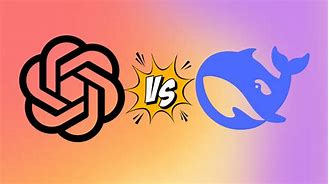DeepSeek Vs. ChatGPT
- I am interested in understanding the core architectural differences between DeepSeek and ChatGPT, particularly in how each model processes and generates responses. Does DeepSeek introduce unique structural innovations, such as improved attention mechanisms, memory efficiency, or hybrid modeling approaches, that set it apart from ChatGPT?
- I would like to know how these architectural choices impact performance in practical scenarios, such as problem-solving, contextual understanding, and response coherence.
- Are there specific benchmarks, research findings, or real-world applications where DeepSeek outperforms ChatGPT, particularly in fields like academic research, coding, or content generation? Conversely, are there areas where ChatGPT maintains a significant advantage over DeepSeek?

1 Answer

DeepSeek and ChatGPT are both advanced AI language models, but they differ significantly in their architectures, training methodologies, and performance across various tasks.
Architectural Differences:
- DeepSeek: Employs a Mixture of Experts (MoE) architecture, which consists of multiple specialized sub-models ("experts") that collaborate to process information efficiently. This design allows the model to activate only relevant experts for a given task, enhancing computational efficiency and scalability.
- ccn.com
- ChatGPT: Utilizes a dense transformer-based architecture, where all parameters are active during processing. This approach ensures a comprehensive understanding of context but can be more resource-intensive compared to MoE architectures.
Training Methodologies:
- DeepSeek: Relies predominantly on Reinforcement Learning (RL), allowing the model to evolve behaviors independently. This dynamic training methodology enables DeepSeek to exhibit self-evolving reasoning capabilities.
- teachfloor.com
- ChatGPT: Leverages Supervised Fine-Tuning (SFT) extensively, using large datasets to guide its learning process. This method enhances language consistency and usability but may limit the model's adaptability compared to RL-driven approaches.
Performance in Practical Scenarios:
- Problem-Solving and Reasoning: DeepSeek's RL-driven architecture excels in tasks requiring advanced reasoning and problem-solving, particularly in coding and multilingual tasks.
- teachfloor.com
- Contextual Understanding and Response Coherence: ChatGPT's dense architecture and SFT training contribute to its strong performance in maintaining context and generating coherent responses, making it suitable for general-purpose applications.
Benchmarks and Real-World Applications:
- DeepSeek: Demonstrates superior performance in coding benchmarks and multilingual tasks, attributed to its specialized architecture and training approach.
- teachfloor.com
- ChatGPT: Excels in general-purpose tasks, including content generation and customer service interactions, due to its comprehensive training and robust language understanding.
Conclusion:
DeepSeek introduces unique structural innovations, such as the Mixture of Experts architecture and RL-driven training, which enhance its performance in specialized tasks like coding and multilingual applications. Conversely, ChatGPT's dense transformer architecture and SFT approach provide advantages in general-purpose tasks, offering strong contextual understanding and response coherence. The choice between DeepSeek and ChatGPT depends on the specific requirements of the application, with each model offering distinct strengths tailored to different use cases.
https://www.youtube.com/watch?v=ychHV4cP9A4&pp=ygUURGVlcFNlZWsgVnMuIENoYXRHUFQ%3D
Related Tags
View AllMost Active
View All











